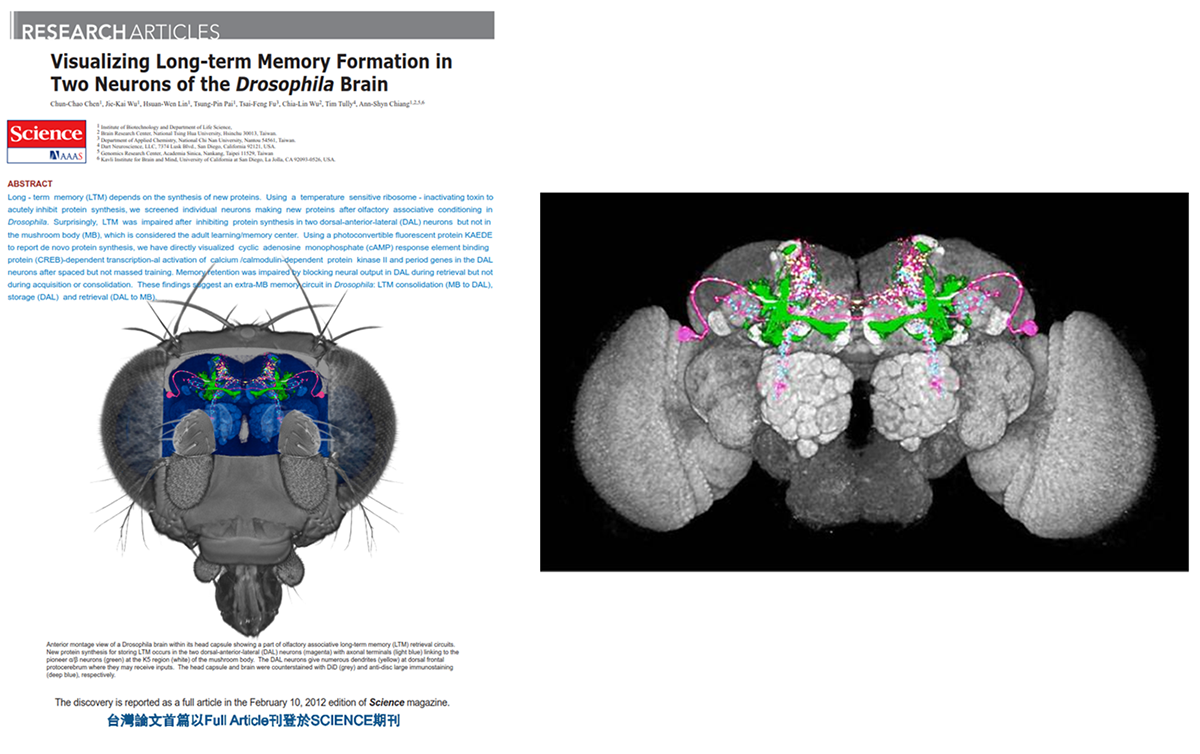Memory is one of the core functions of the brain. The memory group of Brain Research Center at NTHU is utilizing Drosophila as the animal model to investigate the mechanism of memory formation. When a brain receives conditioned and unconditioned stimulus (odors and foot shock), different neuronal cells responsive to these two stimulus are activated. Eventually, the neuronal signals corresponding to these two stimulus meet somewhere in the brain, and this association results in memory formation. The whole process of the memory formation involves dynamic interactions and activations among many genes, proteins and cells. Based on our single cell database of Drosophila, Brain Research Center at NTHU are establishing the memory connectome by understanding the molecular mechanisms and information flow within the memory circuitry in different periods of memory formation. We believe that, by deciphering the complicated mechanisms of memory formation, we are able to build a bionic learning model, which will be a great help to many applications, such as artificial intelligence deep learning and resolving human memory disorders. The memory group has 3 major goals:
